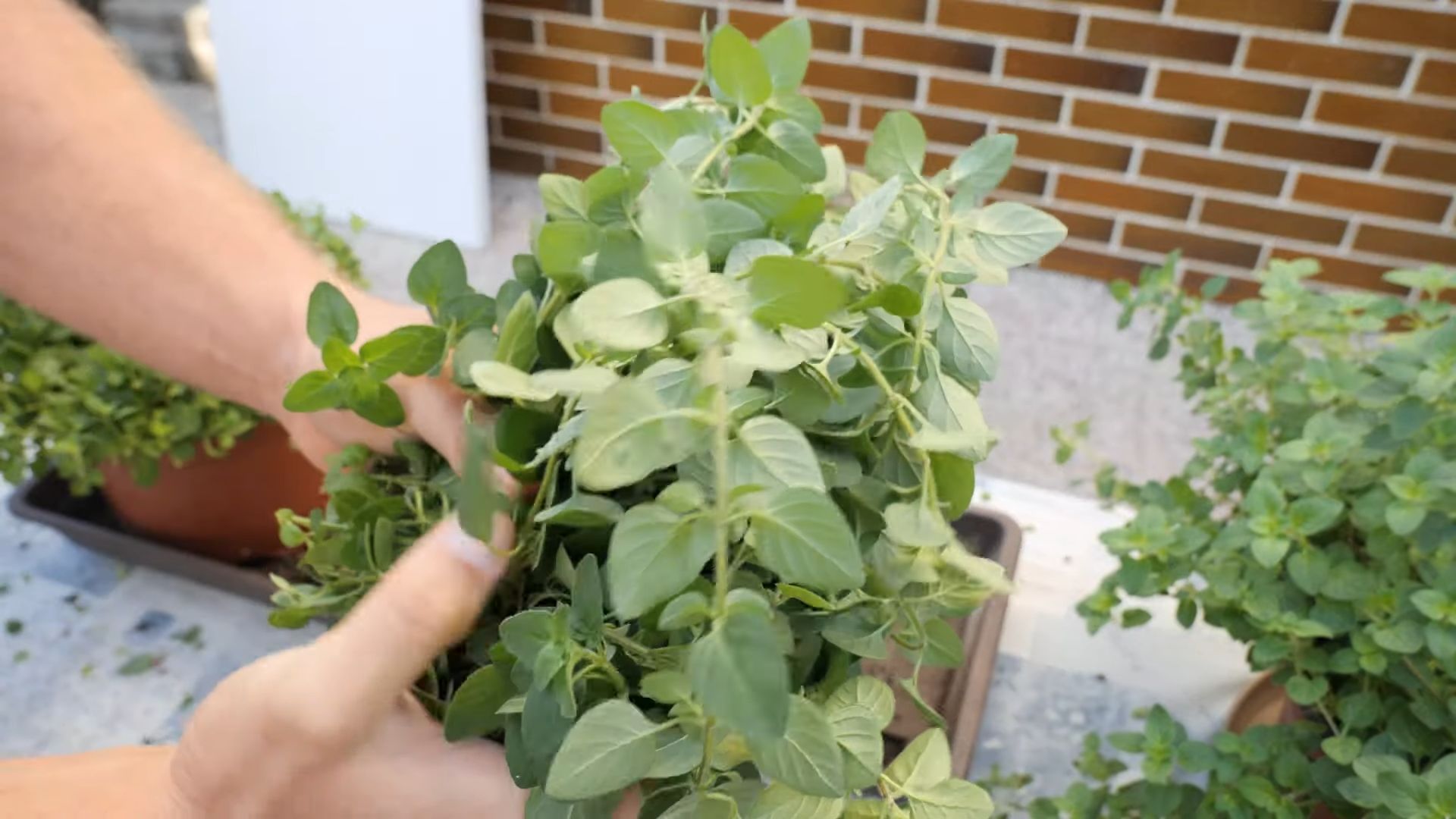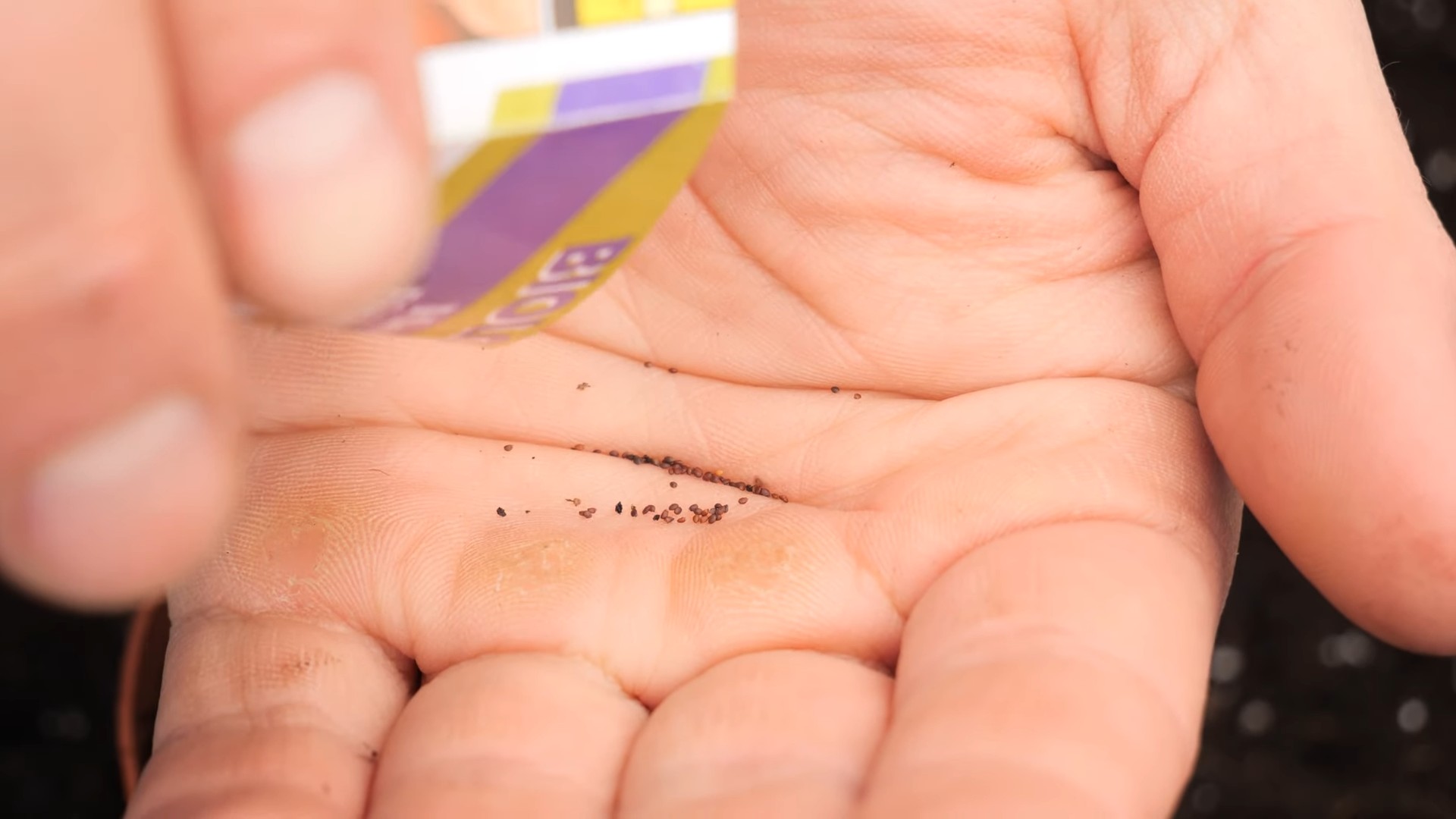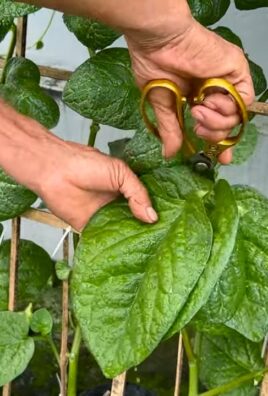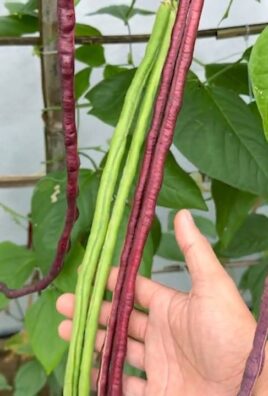Grow Oregano at Home – and unlock a world of flavor right outside your door! Have you ever reached for oregano while cooking, only to find your spice jar empty? Or worse, filled with dried-out, flavorless leaves? I know I have! That’s why I’m so excited to share these simple, effective DIY tricks for cultivating your own thriving oregano patch.
Oregano, with its pungent aroma and earthy taste, has been cherished for centuries. The ancient Greeks and Romans revered it, associating it with joy and good health. They even used it to crown brides and grooms! Today, oregano remains a staple in Mediterranean cuisine and beyond, adding depth to everything from pizzas and pastas to grilled meats and roasted vegetables.
But why rely on store-bought oregano when you can easily grow oregano at home? Not only will you have a constant supply of fresh, flavorful herbs at your fingertips, but you’ll also save money and reduce your environmental impact. Plus, gardening is incredibly therapeutic! This DIY guide will walk you through everything you need to know, from choosing the right variety to propagating new plants. Get ready to transform your garden (or even your windowsill!) into an oregano oasis. Let’s get started!

Growing Oregano at Home: A DIY Guide for Flavorful Success
Hey there, fellow herb enthusiasts! I’m so excited to share my tried-and-true method for growing oregano right in your own home. Fresh oregano is a game-changer in the kitchen, and trust me, it’s way easier than you think to cultivate your own supply. Let’s dive in!
Choosing Your Oregano Variety
Before we get our hands dirty, let’s talk oregano varieties. There are a few popular options, each with its own unique flavor profile:
* Greek Oregano (Origanum vulgare hirtum): This is the classic, robust oregano you’re probably most familiar with. It has a strong, pungent flavor that’s perfect for Mediterranean dishes.
* Italian Oregano (Origanum x majoricum): Often considered a hybrid between oregano and sweet marjoram, Italian oregano has a milder, sweeter flavor than Greek oregano.
* Mexican Oregano (Lippia graveolens): Technically not a true oregano, Mexican oregano has a bolder, more citrusy flavor with hints of anise. It’s fantastic in Mexican cuisine.
* Golden Oregano (Origanum vulgare ‘Aureum’): This variety is prized for its beautiful golden foliage and milder flavor. It’s a great choice for adding visual interest to your herb garden.
I personally love Greek oregano for its intense flavor, but feel free to experiment and find your favorite!
Getting Started: Seeds vs. Cuttings
You have two main options for starting your oregano: seeds or cuttings.
* Seeds: Starting from seed is a budget-friendly option, but it requires a bit more patience. Oregano seeds are tiny and can be slow to germinate.
* Cuttings: Taking cuttings from an existing oregano plant is a faster and easier way to get started. You’ll have a mature plant much sooner.
I’ll cover both methods in detail below.
Growing Oregano from Seeds
Here’s how to grow oregano from seeds:
1. Gather Your Supplies:
* Oregano seeds
* Seed starting tray or small pots
* Seed starting mix (a light, well-draining mix is essential)
* Spray bottle
* Plastic wrap (optional)
* Warm, sunny location or grow light
2. Sow the Seeds:
* Moisten the seed starting mix thoroughly.
* Sprinkle the oregano seeds thinly over the surface of the soil. They are very small, so don’t bury them too deep.
* Gently press the seeds into the soil.
* Lightly mist the surface with water using a spray bottle.
3. Create a Humid Environment:
* Cover the seed starting tray or pots with plastic wrap to create a humid environment. This will help the seeds germinate.
* Alternatively, you can use a humidity dome if you have one.
4. Provide Warmth and Light:
* Place the seed starting tray or pots in a warm, sunny location. A temperature of around 70-75°F (21-24°C) is ideal.
* If you don’t have a sunny spot, you can use a grow light.
5. Maintain Moisture:
* Check the soil moisture daily and mist with water as needed to keep it consistently moist but not soggy.
* Remove the plastic wrap or humidity dome once the seeds have germinated.
6. Thin the Seedlings:
* Once the seedlings have developed a few sets of true leaves (the leaves that look like oregano leaves, not just the initial seed leaves), thin them out so that they are spaced about 1-2 inches apart.
* Carefully snip off the weaker seedlings at the soil line.
7. Transplant the Seedlings:
* Once the seedlings are large enough to handle (about 3-4 inches tall), you can transplant them into larger pots or directly into your garden.
* Harden off the seedlings by gradually exposing them to outdoor conditions for a week before transplanting.
Growing Oregano from Cuttings
This method is my personal favorite because it’s so quick and easy!
1. Gather Your Supplies:
* Healthy oregano plant
* Sharp, clean scissors or pruning shears
* Small pots
* Potting mix
* Rooting hormone (optional, but it helps)
* Plastic bag or clear container
2. Take the Cuttings:
* Choose healthy stems that are about 4-6 inches long.
* Cut the stems just below a leaf node (the point where leaves grow from the stem).
* Remove the leaves from the bottom 1-2 inches of the stem.
3. Apply Rooting Hormone (Optional):
* Dip the cut end of the stem into rooting hormone powder or liquid. This will encourage root growth.
4. Plant the Cuttings:
* Fill the small pots with potting mix.
* Make a small hole in the soil and insert the cutting.
* Gently press the soil around the cutting to secure it.
5. Create a Humid Environment:
* Water the cuttings thoroughly.
* Cover the pots with a plastic bag or clear container to create a humid environment. This will help the cuttings root.
6. Provide Warmth and Light:
* Place the pots in a warm, bright location, but avoid direct sunlight.
7. Monitor and Water:
* Check the soil moisture daily and water as needed to keep it consistently moist but not soggy.
* After a few weeks, gently tug on the cuttings to see if they have rooted. If they resist, they have developed roots.
8. Transplant the Rooted Cuttings:
* Once the cuttings have rooted, you can transplant them into larger pots or directly into your garden.
Caring for Your Oregano Plant
Now that you have your oregano plant, here’s how to keep it happy and thriving:
* Sunlight: Oregano loves sunshine! Aim for at least 6-8 hours of direct sunlight per day. If you’re growing it indoors, place it near a sunny window or use a grow light.
* Watering: Water oregano when the top inch of soil feels dry to the touch. Avoid overwatering, as this can lead to root rot. Oregano prefers well-drained soil.
* Soil: Use a well-draining potting mix or garden soil. You can amend the soil with compost or other organic matter to improve drainage and fertility.
* Fertilizing: Oregano doesn’t need a lot of fertilizer. You can feed it with a balanced liquid fertilizer every few weeks during the growing season.
* Pruning: Prune your oregano plant regularly to encourage bushier growth and prevent it from becoming leggy. Simply snip off the tips of the stems.
* Harvesting: You can start harvesting oregano leaves as soon as the plant is large enough. Simply snip off the stems with scissors or pruning shears. The flavor is most intense just before the plant flowers.
* Overwintering: Oregano is a perennial in warmer climates (zones 5-9). In colder climates, you can overwinter it indoors. Bring the plant indoors before the first frost and place it in a sunny location. Water sparingly during the winter months.
Troubleshooting
Here are a few common problems you might encounter when growing oregano and how to fix them:
* Yellowing Leaves: This could be a sign of overwatering, underwatering, or nutrient deficiency. Check the soil moisture and adjust your watering accordingly. You can also try fertilizing the plant with a balanced fertilizer.
* Leggy Growth: This is usually caused by insufficient sunlight. Move the plant to a sunnier location or use a grow light. Pruning can also help to encourage bushier growth.
* Pests: Oregano is generally pest-resistant, but it can occasionally be affected by aphids or spider mites. You can control these pests with insecticidal soap or neem oil.
* Root Rot: This is caused by overwatering and poor drainage. Make sure the soil is well-draining and avoid overwatering. If the plant is severely affected, you may need to repot it with fresh soil.
Harvesting and Using Your Oregano
Harvesting your oregano is the best part! You can harvest leaves throughout the growing season. The flavor is most intense just before the plant flowers. To harvest, simply snip off the stems with scissors or pruning shears.
You can use fresh oregano leaves in a variety of dishes, including:
* Pizza sauce
* Pasta sauce
* Soups
*

Conclusion
So, there you have it! Growing oregano at home isn’t just a fun project; it’s a game-changer for your culinary adventures. Imagine stepping into your kitchen and having fresh, vibrant oregano readily available to elevate your dishes. No more wilted, store-bought herbs that lack that intense, aromatic punch. This DIY trick is a must-try because it empowers you to control the quality and freshness of your ingredients, adding a burst of flavor to everything you create.
Think about the possibilities! You can experiment with different varieties of oregano, from the classic Greek oregano with its robust flavor to the milder Italian oregano, or even the fragrant Mexican oregano, each offering a unique twist to your recipes. You can also try growing oregano in different containers – terracotta pots for a rustic look, hanging baskets for a touch of greenery, or even repurposing old tin cans for a charming, eco-friendly vibe.
Beyond the flavor benefits, growing your own oregano is also incredibly rewarding. It connects you to the natural world, provides a sense of accomplishment, and adds a touch of beauty to your home. Plus, it’s a sustainable way to reduce your reliance on store-bought herbs, minimizing your environmental impact.
Don’t be intimidated if you’ve never grown herbs before. Oregano is a remarkably resilient and forgiving plant, making it perfect for beginners. With just a little bit of sunlight, well-drained soil, and regular watering, you’ll be amazed at how quickly your oregano plant thrives.
We encourage you to take the plunge and try growing oregano at home. It’s a simple, affordable, and incredibly rewarding experience that will transform your cooking and bring a touch of freshness to your life. Once you’ve harvested your first batch of homegrown oregano, we’d love to hear about your experience! Share your tips, tricks, and favorite oregano-infused recipes in the comments below. Let’s create a community of oregano enthusiasts and inspire others to embrace the joy of growing their own herbs.
Frequently Asked Questions (FAQs)
What are the best conditions for growing oregano at home?
Oregano thrives in sunny locations, requiring at least six to eight hours of direct sunlight per day. Choose a well-draining soil mix to prevent root rot. A mixture of potting soil, perlite, and compost works well. Ensure your container has drainage holes. While oregano is drought-tolerant, regular watering is essential, especially during hot weather. Allow the soil to dry out slightly between waterings.
What are the different varieties of oregano I can grow?
There are several varieties of oregano, each with its unique flavor profile. Greek oregano (Origanum vulgare hirtum) is known for its strong, pungent flavor and is commonly used in Mediterranean cuisine. Italian oregano (Origanum x majoricum) has a milder, sweeter flavor. Mexican oregano (Lippia graveolens) offers a citrusy, anise-like flavor and is popular in Mexican dishes. Other varieties include golden oregano, which adds a touch of color to your garden, and creeping oregano, which is ideal for ground cover. Experiment with different varieties to find your favorite.
How do I propagate oregano?
Oregano can be propagated through several methods, including seeds, cuttings, and division. Starting from seeds is a cost-effective option, but it takes longer for the plant to mature. Cuttings are a faster way to propagate oregano. Simply take a 4-6 inch cutting from a healthy stem, remove the lower leaves, and place it in water or directly into moist soil. Roots will typically develop within a few weeks. Division involves separating a mature oregano plant into smaller clumps, each with its own roots and stems. This is best done in the spring or fall.
When and how should I harvest oregano?
You can start harvesting oregano once the plant is about 4-6 inches tall. The best time to harvest is in the morning, after the dew has dried but before the sun gets too hot. Use scissors or pruning shears to cut the stems just above a leaf node. This will encourage the plant to branch out and produce more leaves. You can harvest oregano throughout the growing season. For the best flavor, harvest before the plant flowers.
How do I dry oregano for later use?
Drying oregano is a great way to preserve its flavor for year-round use. There are several methods for drying oregano. One option is to tie the stems together in small bundles and hang them upside down in a cool, dry, and well-ventilated place. Another option is to spread the leaves on a baking sheet and dry them in a low oven (around 170°F) for a few hours. You can also use a dehydrator to dry oregano. Once the leaves are completely dry, crumble them and store them in an airtight container in a cool, dark place.
What are some common problems when growing oregano and how can I fix them?
Oregano is generally a low-maintenance plant, but it can be susceptible to a few problems. Overwatering can lead to root rot, so ensure your soil is well-draining and avoid overwatering. Pests such as aphids and spider mites can sometimes infest oregano plants. You can control these pests by spraying the plants with insecticidal soap or neem oil. Powdery mildew, a fungal disease, can also affect oregano, especially in humid conditions. Improve air circulation around the plants and treat with a fungicide if necessary.
Can I grow oregano indoors?
Yes, you can grow oregano indoors, but it requires sufficient sunlight. Place the plant near a sunny window or use a grow light to provide at least six hours of light per day. Ensure the pot has drainage holes and use a well-draining potting mix. Water regularly, allowing the soil to dry out slightly between waterings.
What are some creative ways to use homegrown oregano?
The possibilities are endless! Use fresh or dried oregano to season your favorite dishes, such as pasta sauces, pizzas, soups, stews, and grilled meats. Add oregano to homemade salad dressings, marinades, and herb blends. You can also use oregano to make herbal teas or infuse olive oil with its flavor. Experiment with different recipes and discover your own favorite ways to use homegrown oregano.
Is oregano a perennial or annual plant?
Oregano is a perennial plant, meaning it will come back year after year. In colder climates, the plant may die back in the winter, but it will regrow in the spring. To protect oregano plants in cold climates, mulch around the base of the plant to insulate the roots.
How does growing oregano at home save me money?
Purchasing fresh herbs from the grocery store can be expensive, especially if you only need a small amount. By growing oregano at home, you can harvest only what you need, saving you money and reducing food waste. Plus, you’ll have a constant supply of fresh, flavorful oregano whenever you need it.





Leave a Comment